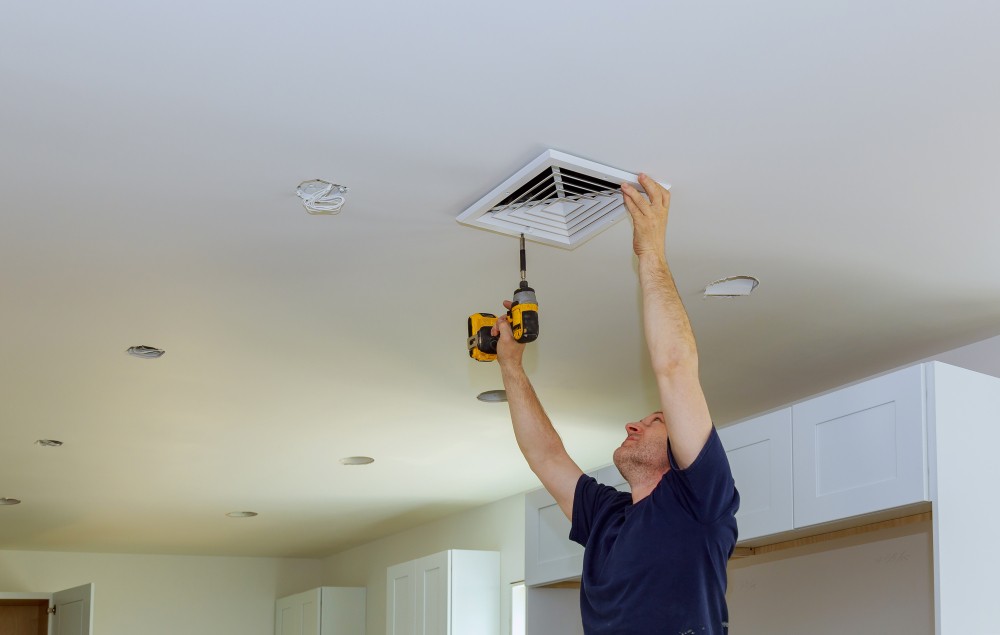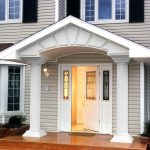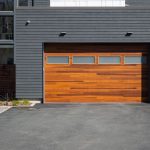Imagine walking into your home on a hot summer day and being greeted by a refreshing breeze of cool air. With central air conditioning, this is a reality for many homeowners. However, the high costs associated with central air systems can be a major deterrent. The good news is, there are ways to find cheap central air conditioning systems without compromising on quality or efficiency.

Central Air Conditioning Systems
When considering a central air conditioning system, it is crucial to understand the factors influencing the cost structure. Central air systems represent a substantial investment, with prices significantly influenced by various factors. According to NerdWallet, installation costs in the U.S. average between $3,000 to $7,000. Several elements impact these figures.
Key Cost Drivers
1. Size and Layout of the Home: Larger homes require more powerful units, resulting in higher installation costs. Conducting a load calculation based on square footage, window count, and insulation quality helps determine the appropriate unit size.
2. Energy Efficiency Considerations: Energy-efficient units often have a higher upfront cost but yield significant energy savings over time. Opting for units with high SEER (Seasonal Energy Efficiency Ratio) ratings can enhance long-term savings.
3. Ductwork Requirements: For homes without existing ductwork, additional installation costs arise. Conversely, homes with existing ductwork may only need minor upgrades, which can save money.
For personalized estimates, utilize the HVAC Replacement Cost Calculator by Brand & Size for detailed insights.
Strategies for Sourcing Affordable Central Air Conditioning Systems
Attaining a balance between cost and performance is essential when choosing a central air system. Here are some effective methods to locate budget-friendly options:
- Extensive Brand and Model Research: Different brands present diverse pricing tiers for their air systems. Thorough research and comparison can reveal cost-efficient choices without eroding quality.
- Utilize Rebates and Financial Incentives: Certain states offer rebates or tax incentives for installing energy-efficient air systems. Check with local utility providers for available rebates to lower initial expenses.
- Timing Purchases: Opt for off-season purchases to benefit from reduced prices. Retailers may offer discounts during periods of low demand to clear out the inventory.
- Online Deals and Discounts: Navigating through online marketplaces and websites can also provide opportunities for significant discounts, especially during sales events or promotional periods.
For detailed insights into potential costs and savings, explore resources like Bankrate's Cost Guide.
Considering Ductless Mini-Split Systems as an Alternative
Ductless mini-split systems offer a viable alternative for homes where extensive ductwork installation is cost-prohibitive. Here’s why they might be the right choice:
- Non-Intrusive Installation: These systems are easier to install and less intrusive as they don't require ductwork for air distribution.
- Customization and Zone Control: Ductless systems offer better temperature control across different rooms or zones, which can contribute to energy savings by cooling only occupied areas.
- Accessible Financing: Many retailers provide feasible financing plans, easing the burden of upfront costs.
Installation expenses vary, but ductless mini-split systems typically range from $2,000 to $5,000 per zone, according to Fixr.
Maximizing the Lifespan and Efficiency of Central Air Conditioning Units
Securing a reasonably priced central air system is just one part of your investment; optimizing its performance is equally important. Here are some recommendations:
- Commit to Regular Maintenance: Regular maintenance checks, including filter cleaning or replacement, refrigerant level assessments, and leak inspections, ensure efficient operation and prolong the unit’s lifespan.
- Install Programmable Thermostats: These devices regulate temperatures based on schedules, minimizing unnecessary energy consumption during unoccupied periods.
- Enhance Your Home’s Insulation: Proper home insulation minimizes the workload on your air conditioning system, helping reduce energy consumption and costs.
- Use Ceiling Fans Appropriately: Using ceiling fans in conjunction with air conditioning can aid air circulation, allowing for higher thermostat settings without compromising comfort.
- Solar Panels for Energy Efficiency: Consider integrating solar panels to power your systems, reducing electricity bills over time and contributing to sustainable energy use.
For comprehensive insights into HVAC installation costs, consult This Old House for an extensive review of costs and considerations.
Affordable Central Air Conditioning
Begin by understanding the multifaceted cost components associated with central air conditioning systems. Explore alternative options such as ductless systems and off-season purchases when looking to save on costs without sacrificing quality. Remember that while minimizing initial expenditures is crucial, choosing an efficient and reliable system will deliver long-term comfort and financial benefits. By utilizing the tips and resources shared, you are well positioned to enjoy a comfortable, cool living environment without straining your finances. The future of affordable cooling awaits those who plan forward and embrace energy-efficient solutions.


